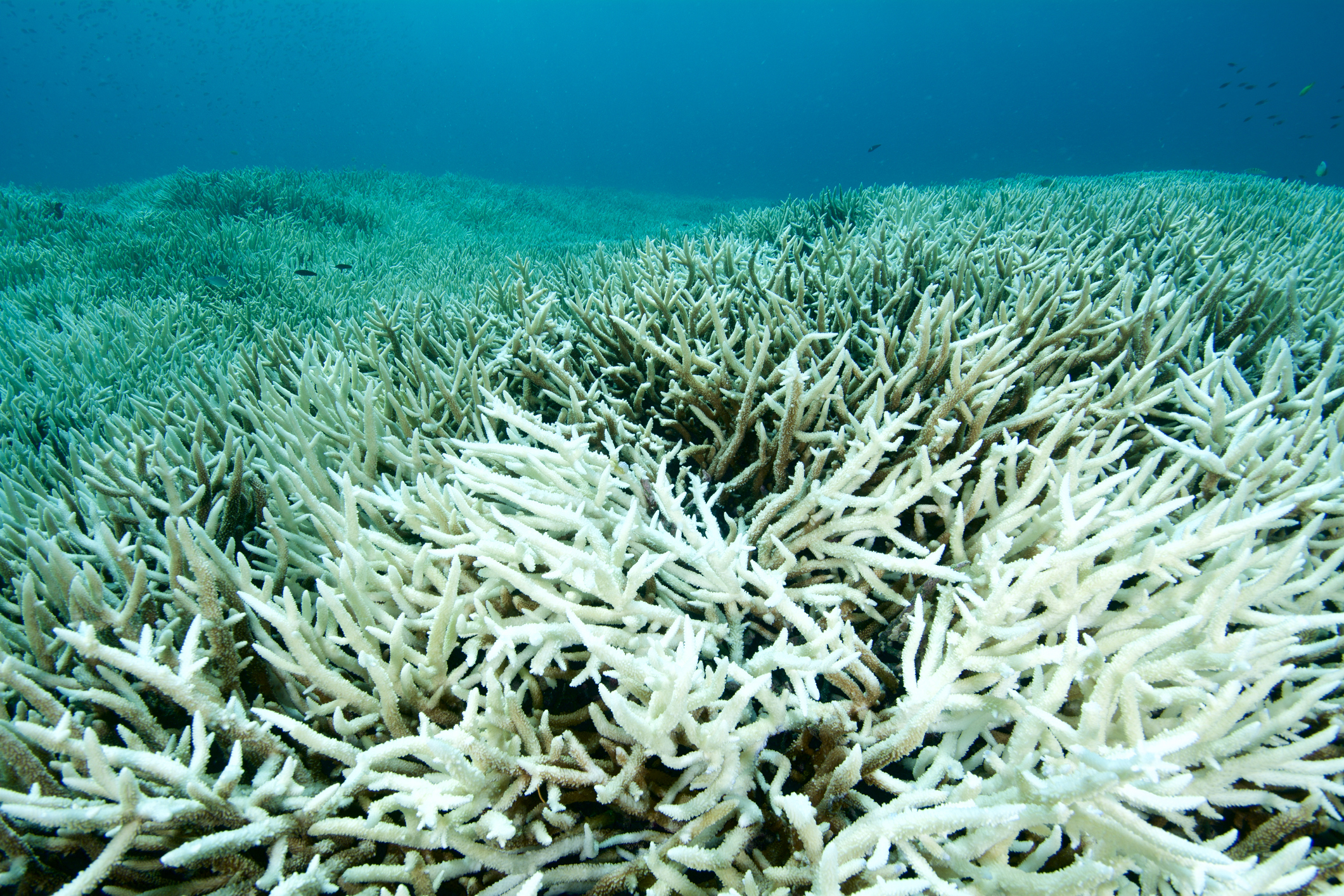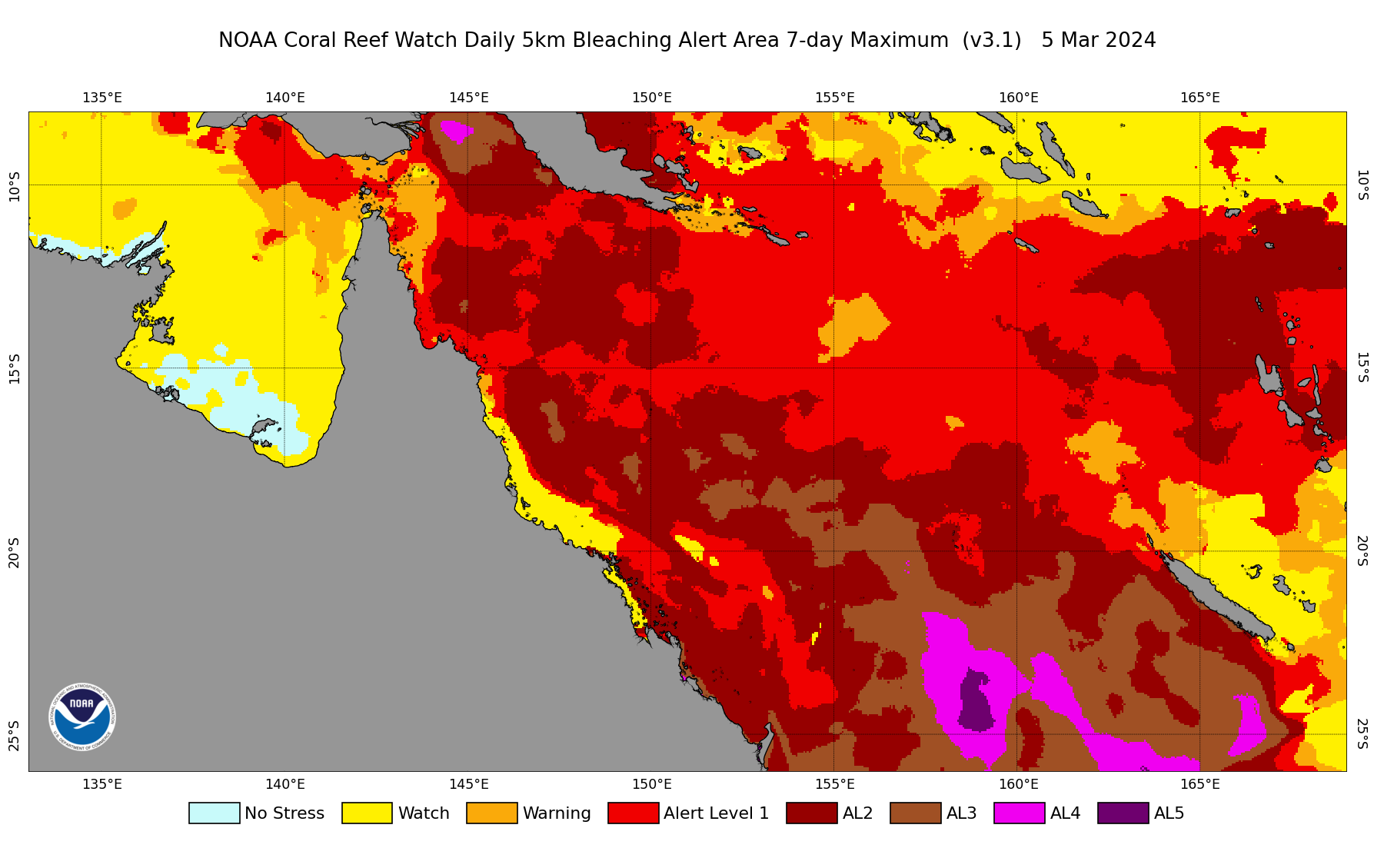Scientist warns of 'worst coral bleaching event in history'
America's National Oceanic and Atmospheric Administration (NOAA) has warned that the world is on the verge of a fourth mass coral bleaching event.
The previous global bleaching events – where reefs across the world were simultaneously affected – occurred in 1998, 2010, and in the period between 2014 and 2017.
In Australia, mass bleaching events affecting the Great Barrier Reef occurred in 2002, 2016, 2017, 2020 and 2022, according to the Australian Institute of Marine Science (AIMS) – and the Great Barrier Reef is again in danger, NOAA says.
"It's looking like the entirety of the Southern Hemisphere is probably going to bleach this year," NOAA ecologist Derek Manzello told the international news agency Reuters.

Image: Coral bleached in 2016 during the most recent global mass bleaching event. Source: iStock.
Warmer-than-usual ocean water is the most common cause of coral bleaching – a process where coral turns white when it's stressed, and the polyps expel the algae that live inside their tissue. Coral can survive a bleaching event, however if it is too severe, it will eventually die.
What's concerning marine biologists at present is the build-up of record-breaking ocean heat fuelled by both climate change and the El Niño climate pattern.

Source: NOAA.
The image above shows the latest alert levels in the Great Barrier Reef region from NOAA’s Coral Reef Watch website. As you can see, the alert level is in the high range along most of the Queensland coast and nearby waters.
Overnight, leading Australian coral reef scientist Professor Terry Hughes shared a series of charts on the social media platform X showing unprecedented accumulation of heat using a measure known as the Degree Heating Week (DHW).
The black trajectory in the lower left of these plots shows the ongoing accumulation of heat stress along the #GreatBarrierReef this summer (Degree Heating Weeks).
— Terry Hughes (@ProfTerryHughes) March 6, 2024
In the south, DHW has never been this high.
Other regions are also rising to record levels. pic.twitter.com/cL4Fc6uOfx
If those charts are a little confusing, the BoM chart below shows the daily anomaly for Wednesday, March 6, for Queensland waters. The anomaly represents how much warmer or cooler the water is than average, and as you can see, it’s well above the norm.

Source: BoM.
While the image above only represents one day (March 6), there have been weeks and months of recent days that look just like that one.
"We are literally sitting on the cusp of the worst bleaching event in the history of the planet," NOAA's Derek Manzello told Reuters.
Major bleaching events on Southern Hemisphere coral reefs tend to occur most commonly in the period between February and April.